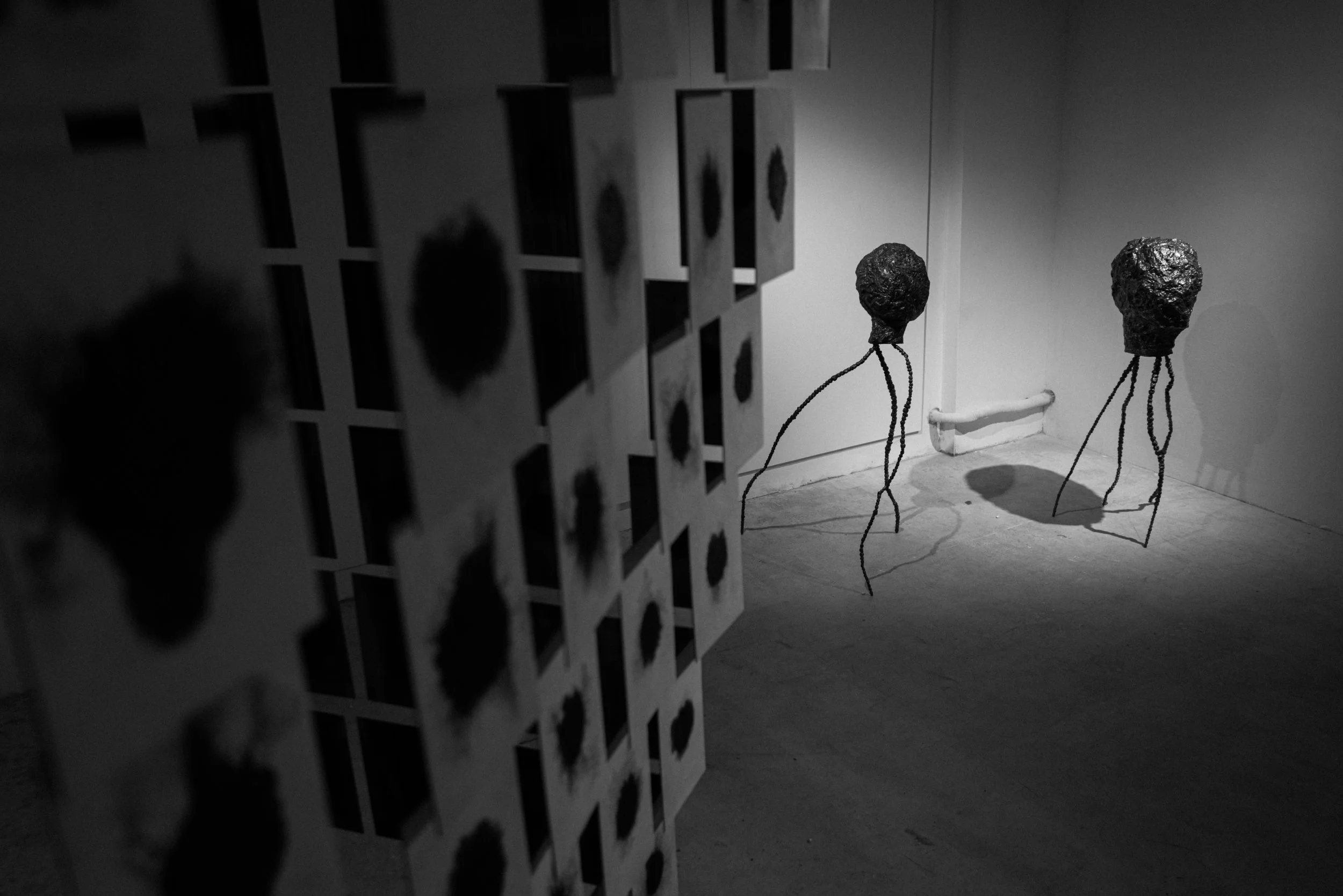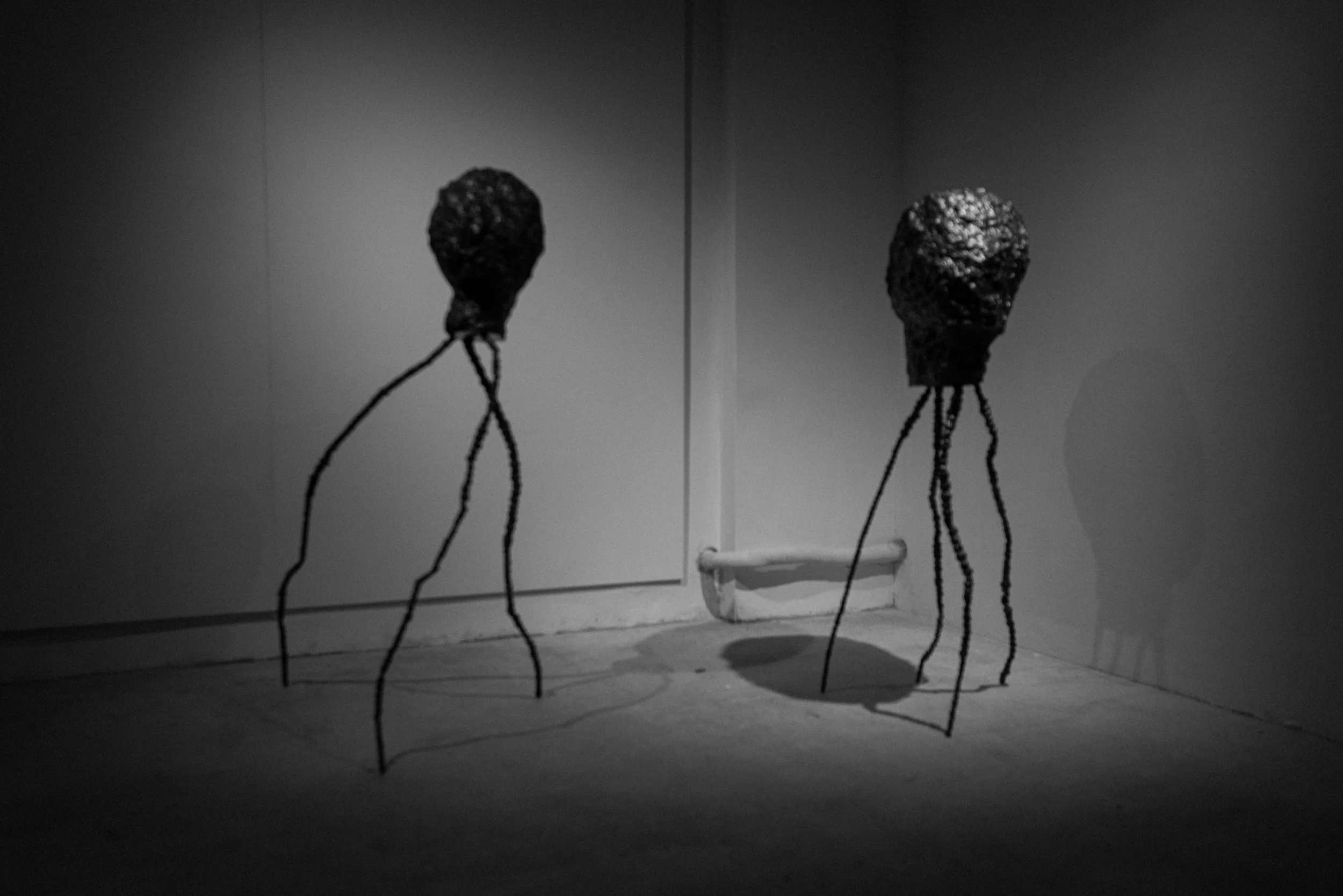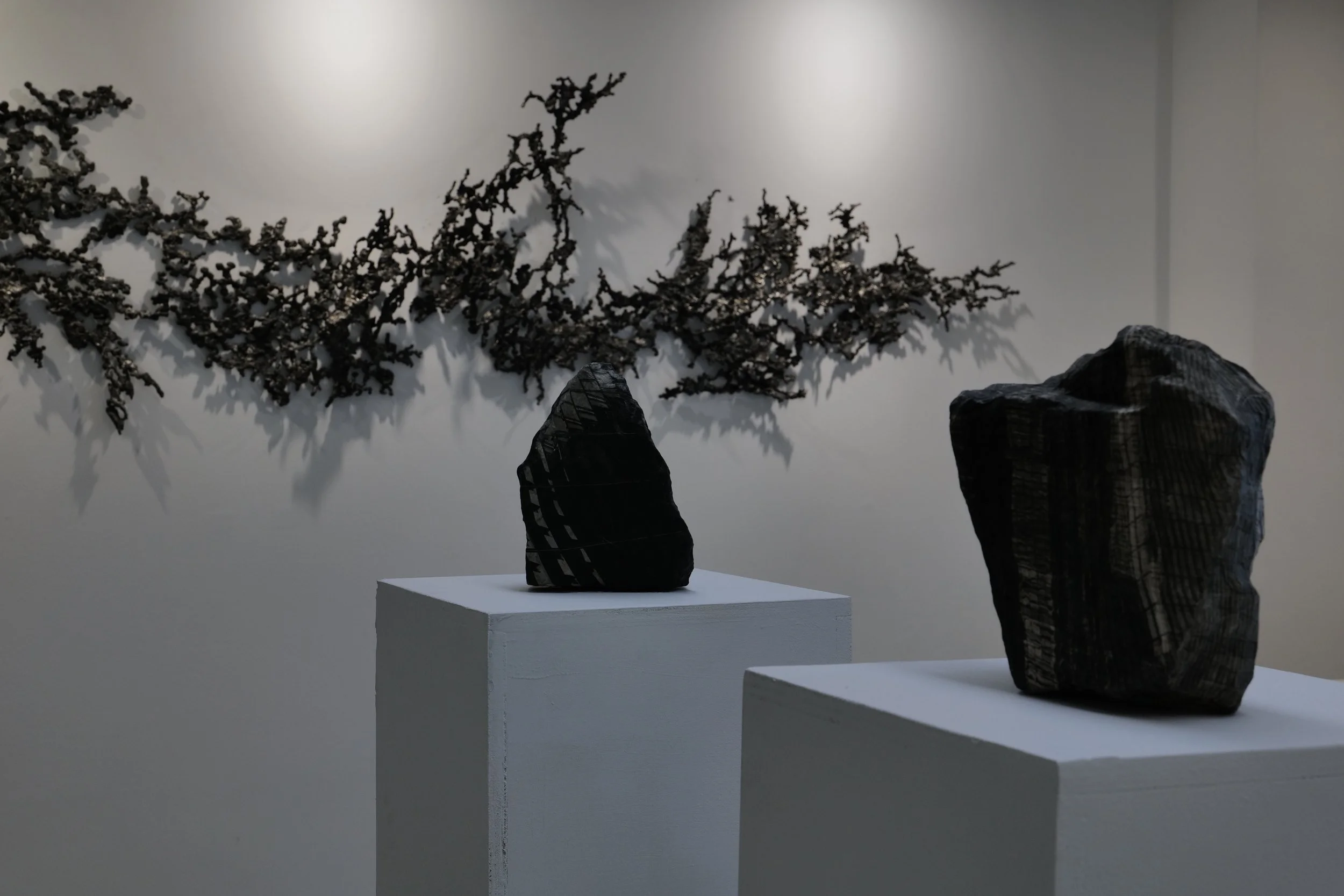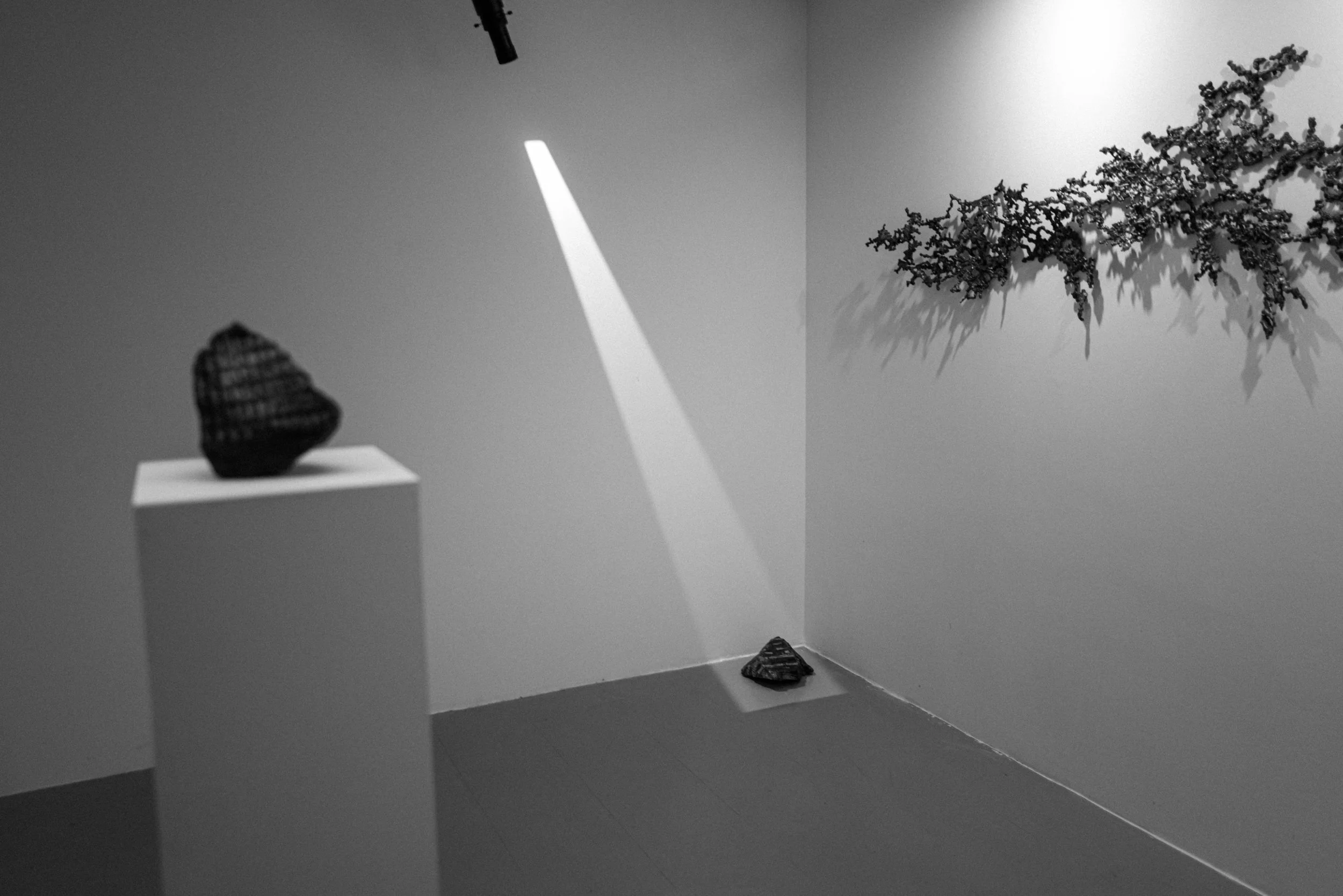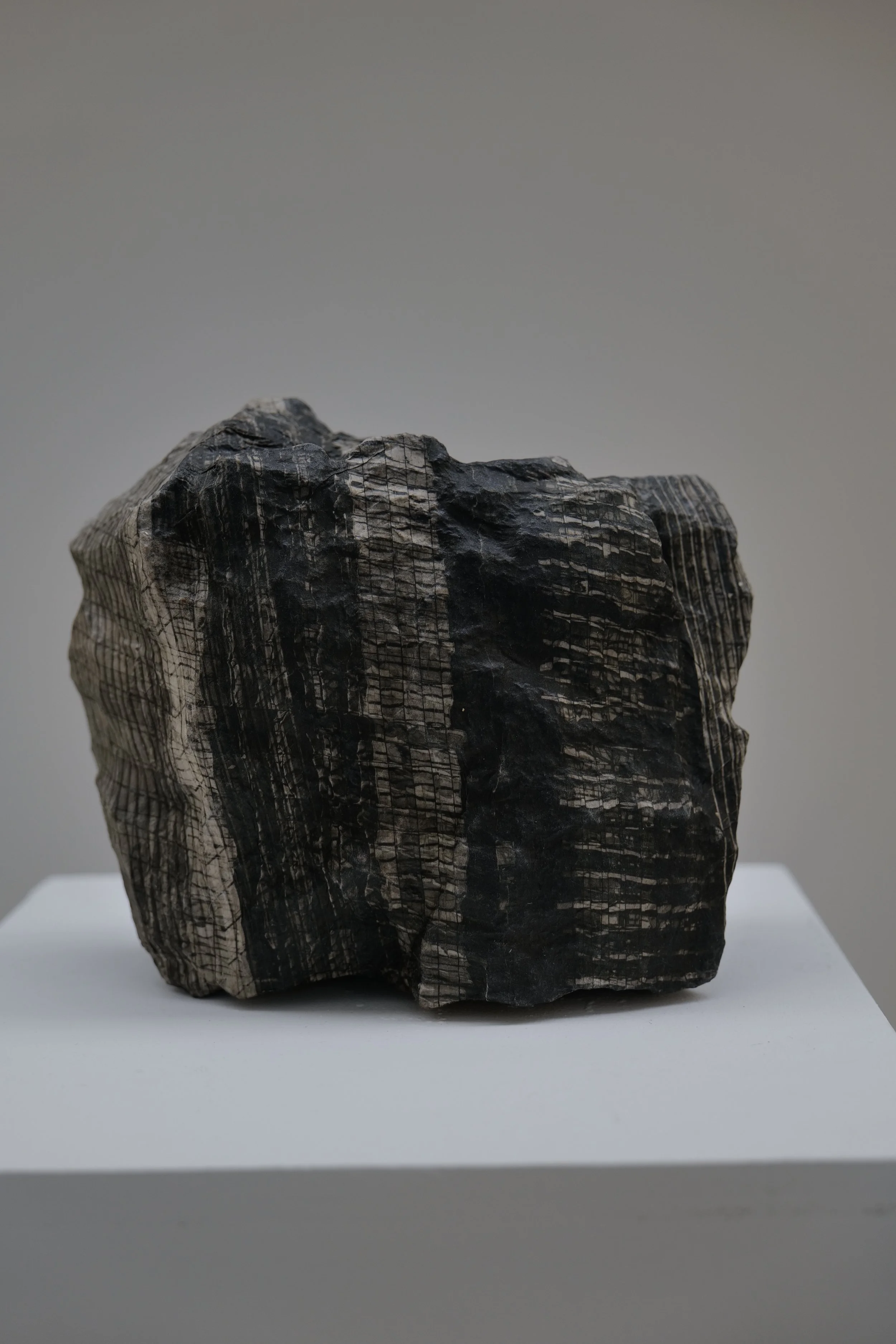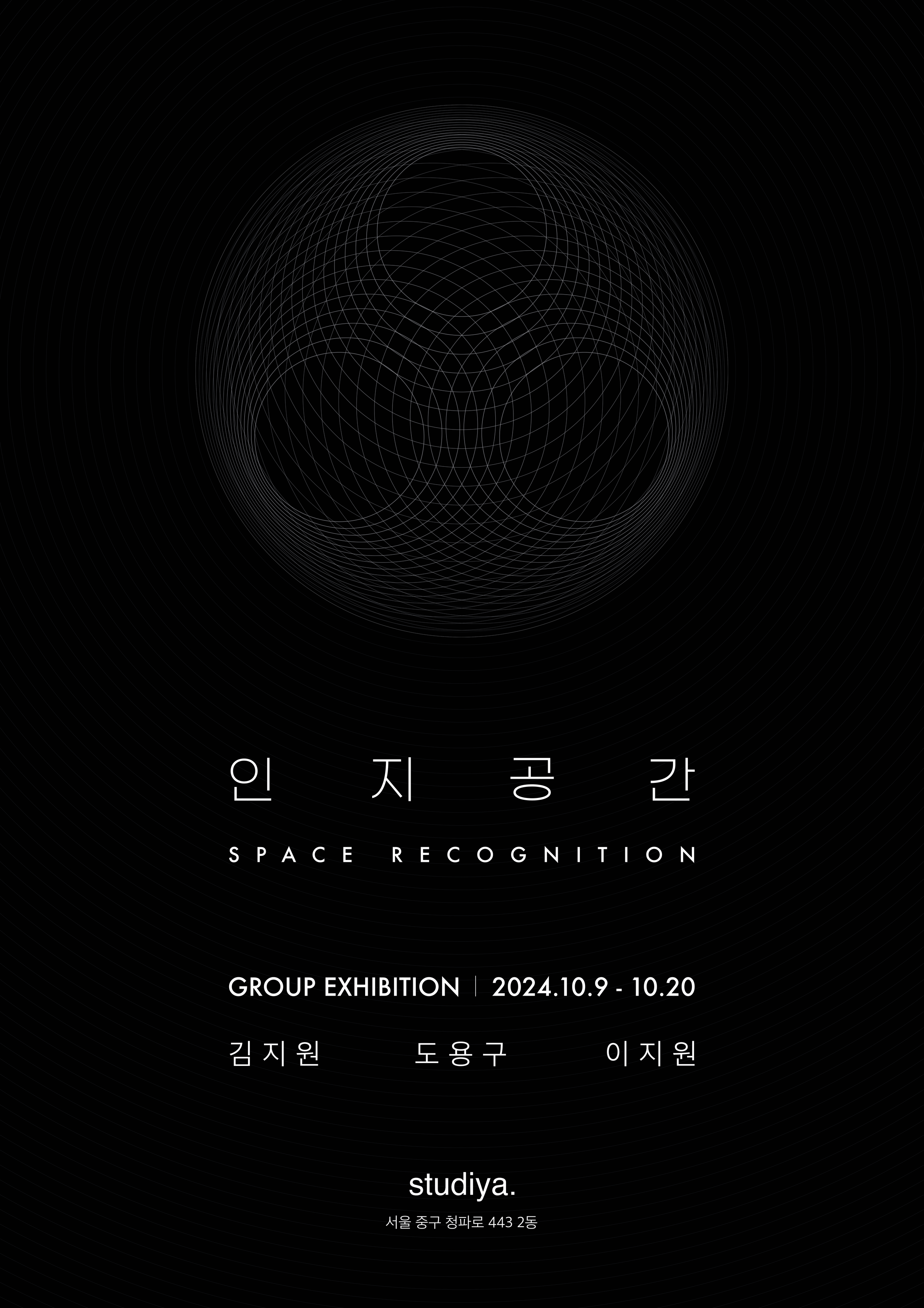<Space recognition>
Group exhibition by Kim Jiwon, Do Yonggu, Lee Jiwon.
2024.10.09 ~ 2024.10.20
Space recognition is a concept introduced in Kim Cho Yeob’s novel ‘Space recognition’, a lattice structure that stores the memories of a community. The people in the novel consider the space to be the aggregation of human intellect and the absolute truth. The heroine, Jenna, realises the limitations and incompleteness of the space recognition after the death of her friend, Eve, who was unable to enter the cognitive space due to her inadequate physical condition, and sets out to the outside world to prove the need for individual space of recognition(sphere).
The artists in the exhibition, Kim Jiwon, Do Yonggu, and Lee Jiwon, capture the process of building and visualising their own individual cognitive spaces. Their spheres, created outside a lattice structure of selected information such as art, crafts, and photographs, unconditionally record all beings, including themselves. By exploring, reorganising and presenting the things recorded in the sphere, the artists offer an inclusive way of looking at things.
Kim Jiwon <Space of Trace>
The work <Scar series> is made of traces left by the process of melting cold metal with a hot flame and cooling it down again. The traces created by the act repeated thousands and tens of thousands of times symbolise the pain, overcoming, and enlightenment that a human being experiences over the course of his or her life, making him or her unique and distinct from others.
Do Yonggu <Space of the Self>
I saw the diversity and difference of human beings in the stones of nature. We are all born in a pure state, evolving and cycling through various encounters and interactions with other beings. I marvel at the fact that even a rough stone, a part of nature, has existed for hundreds of millions of years in a form that is not identical to any other, and has continued to separate and unite. Both humans and non-humans are searching for regularity in irregularity and subjectivity in objectivity.
Lee Jiwon <Space of Boundary>
Everything that exists is defined and kept within conventional boundaries for convenience. In an infinitely expanding universe, beings that are constantly being created fall out of fixed boundaries or cause an imbalance of boundaries. Fluid boundaries embrace them and create balance. It flows from the interstices of black and white, natural and man-made, ground and wall, repetition and change, to the whole.
'인지 공간' 은 김초엽 작가의 소설 <인지 공간>에 등장하는 개념으로, 공동체의 기억을 저장한 격자 구조물이다. 작중 사람들은 인지 공간을 인간 지성의 집대성이자 절대 진리로 여긴다. 주인공 '제나'는 신체조건 미달로 인지 공간 안에 들어가지 못했던 친구 '이브'의 죽음을 계기로 인지 공간의 한계와 불완전성을 깨닫고, 개별적 인지 공간(스피어)의 필요성을 증명하기 위해 바깥 세계로 떠난다.
전시에 참여한 김지원, 도용구, 이지원 작가는 각자의 개별 인지 공간을 구축하고 그것을 시각화하는 과정을 담는다. 미술, 공예, 사진 등 선택된 정보들로 이루어진 격자 구조물 외부에 생성한 이들의 스피어는 자신을 포함한 모든 존재들을 조건 없이 기록한다. 작가들은 스피어 안에 기록된 것들을 탐구하고 재구성하여 내보임으로써, 사물을 바라보는 포용적 관점을 제시한다.
김지원 <흔적 공간>
작품 <Scar series>는 차가운 금속을 뜨거운 불꽃으로 녹이고, 다시 식어 차가워지는 과정에 남은 흔적으로 제작된 것이다. 수천, 수만 번 반복되는 행위에 의해 만들어진 흔적은 한 인간이 삶의 시간을 통해 경험하는 고통, 극복, 깨달음으로 타인과 구별되는 유일한 존재가 됨을 상징한다.
도용구 <자의 공간>
나는 인간의 다양성과 다름을 자연의 돌무더기에서 보았다. 우리 모두는 순수한 상태로 태어나, 서로 다른 존재와의 다양한 만남과 상호 작용을 통해 진화하고 순환하고 있다. 자연의 한 부분인 거친 돌멩이 역시 수억 년의 세월 속에 어느 하나같지 않은 형태로 존재하며 분리와 결합을 지속한 사실에 경이로움을 느낀다. 인간과 비인간 모두 불규칙 속에 규칙을, 객체성 속에서 주체성을 찾고 있다.
이지원 <경계 공간>
존재하는 모든 것은 편의를 위해 관습적인 경계 안에 머물고 정의된다. 무한히 확장하는 우주에서 끊임없이 생성되는 존재들은 고정된 경계에서 낙오되거나 경계의 불균형을 초래한다. 유동적 경계는 그(것)들을 포용하여 균형을 이룬다. 이 경계는 흑과 백, 자연과 인공, 땅과 벽, 반복과 변화의 간극에서 전체로 끊임없이 흐른다.
